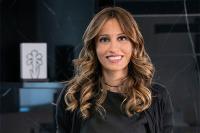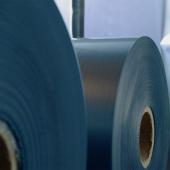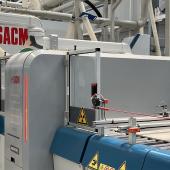The green hydrogen revolution at Iris Ceramica

The world’s first ceramic factory powered by green hydrogen obtained from solar energy will be built in Italy by Iris Ceramica Group with the support of energy infrastructure company Snam by the end of 2022.
The world’s first ceramic factory powered by green hydrogen obtained from solar energy will be built in Italy by Iris Ceramica Group with the support of energy infrastructure company Snam by the end of 2022.
The news was announced – with understandable pride given the revolutionary nature of the project – by Iris Ceramica Group’s CEO Federica Minozzi at a press conference held on 30 September at Cersaie.
The new plant will be built in Castellarano (RE) and by next year will be equipped with native technologies allowing green hydrogen to be used as an energy source. Specifically, these consist of a 2.5 MW large photovoltaic plant installed on the factory roof combined with an electrolyser and a storage system for renewable hydrogen produced on site.
“The plant will initially use a blend of hydrogen and natural gas, bringing an immediate reduction in CO2 emissions. At the same time, however, we will carry out technological research with the aim of using only the hydrogen we produce ourselves and become completely self-sufficient,” explained Federica Minozzi, noting that the plant is designed to run on 100% hydrogen.
The project also saw the involvement of experts from the Chemistry Department of the University of Milan, who have already collaborated with the Iris Ceramica Group in the past on the development of Active Surfaces®. In addition to searching for the most suitable electrolysers for the required application, the university team is also studying ways of using rainwater as a raw material for hydrogen production in order to save water resources.
At the head of a group with a 2020 turnover of €415 million, facilities in Italy, Germany and the United States, more than a thousand employees in Italy and around 500 abroad, Federica Minozzi is well aware of her pioneering role in the world of ceramic production, but hopes that other companies will soon follow suit. “This is the only case in which I hope to be copied by my competitors,” she said, smiling. “With this in mind, we are making our experience available to everyone because the future of the entire industry is at stake, not just that of our group.”
European projects devoted to the industrial use of green hydrogen are still relatively rare and are limited almost exclusively to the iron and steel sector. However, they will be a route to achieving the European goal of carbon neutrality by 2050 and the ambitious EU hydrogen strategy plan of one million tonnes of green hydrogen by 2024, 10 million tonnes by 2030 and then large-scale availability.
It is hardly surprising that it should be the Iris Ceramica Group that has embarked on this new challenge. The pioneering approach adopted by the group’s founder and chairman, Federica’s father Romano Minozzi, has been well known since he set up the company in 1961. It was he, again with Snam, who brought natural gas to the Sassuolo ceramic district in the 1980s. And again it was he who, back in the 1960s, stressed the need for a strong focus on the environmental sustainability of the ceramic manufacturing process. “Our actions have always been guided by the equation Economy=Ecology, a concept invented by my father back in the 1960s to describe the path we would travel,” says Federica Minozzi.
This forward-looking approach has prompted the group to keep ahead of the curve by turning to green, zero-emission hydrogen production, but has also led to a long series of sustainable innovation projects during its 60 years of operations. In addition to achieving the UN 2030 emission targets, the group is involved in reforestation projects and has set up a foundation focused on environmental issues. “Sustainability is a fundamental part of our strategy and corporate culture that defines not just how we do things, but also who we are,” explains Federica Minozzi.
Did you find this article useful?
Join the CWW community to receive the most important news from the global ceramic industry every two weeks





















